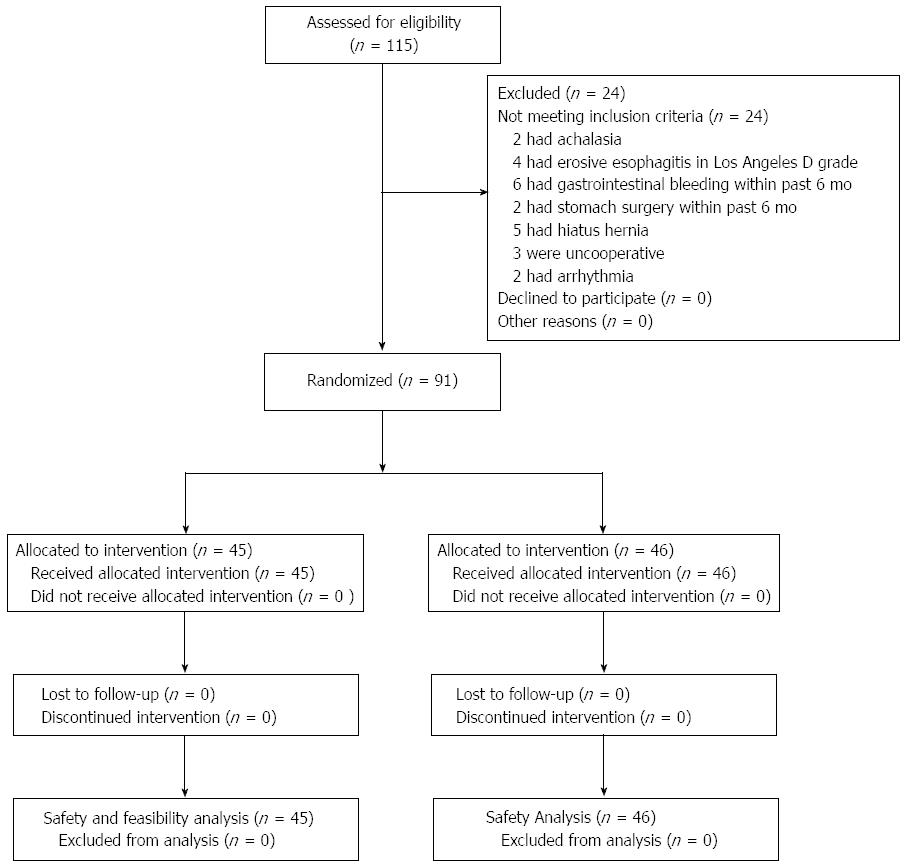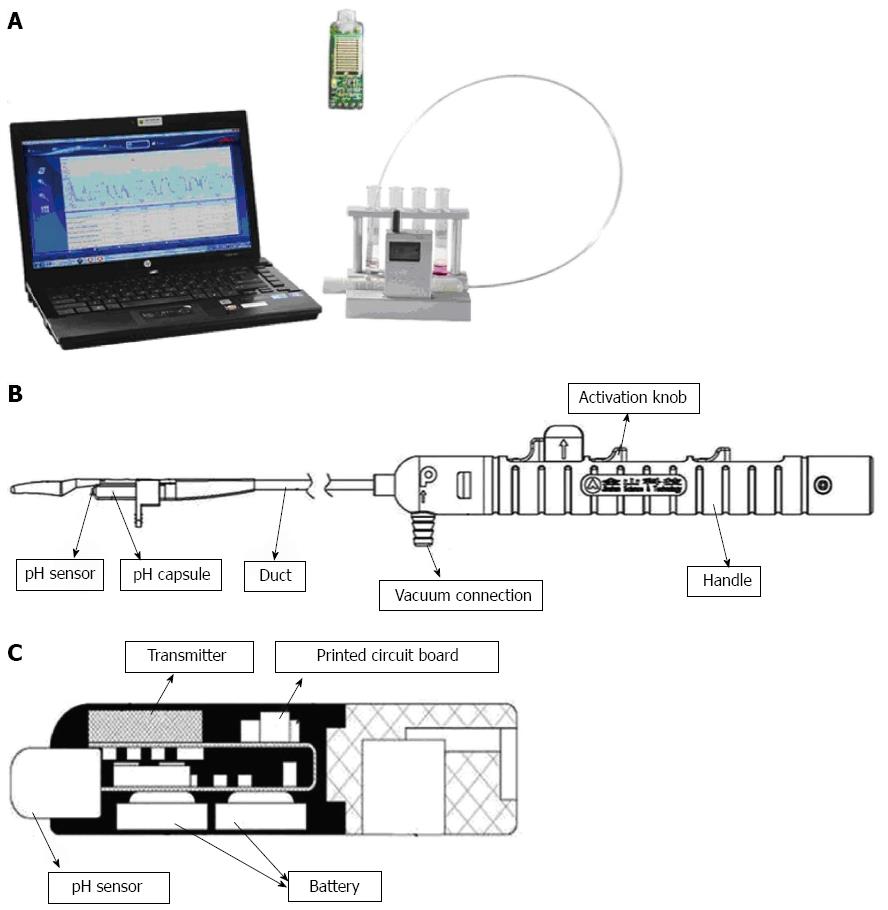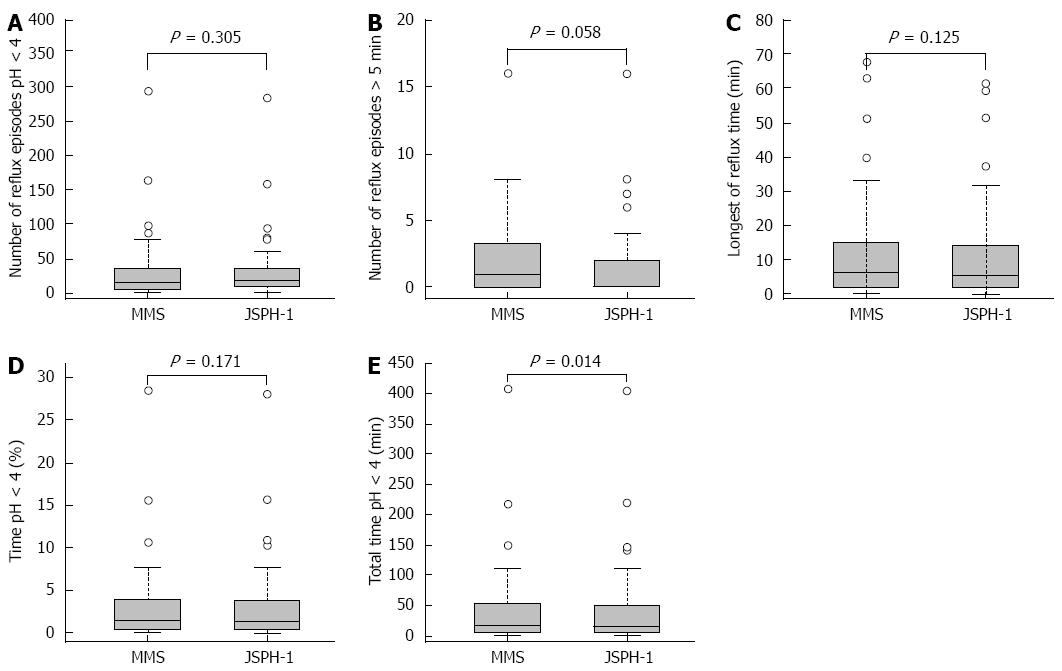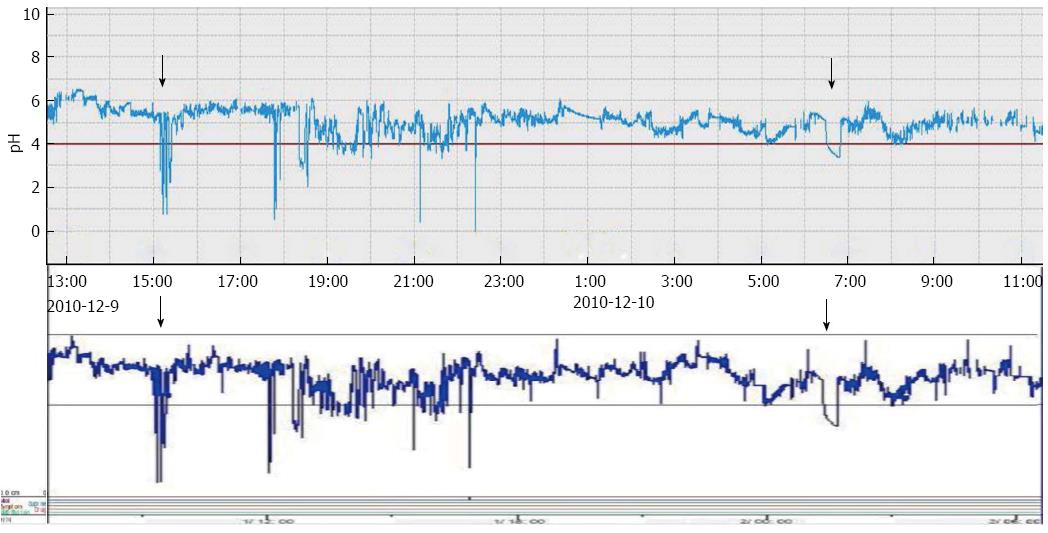Copyright
©2014 Baishideng Publishing Group Inc.
World J Gastroenterol. Oct 28, 2014; 20(40): 14865-14874
Published online Oct 28, 2014. doi: 10.3748/wjg.v20.i40.14865
Published online Oct 28, 2014. doi: 10.3748/wjg.v20.i40.14865
Figure 1 Enrollment and allocation of patients with gastroesophageal reflux disease.
Figure 2 JSPH-1 pH capsule measurement system.
A: The system includes a JSPH-1 delivery system, a receiver, a pH capsule, and a computer workstation; B: Prepackaged pH capsule incorporating both a delivery system and a pH capsule. The handle of the delivery system is separated from the capsule by triggering the activation knobs; C: The pH sensors (antimony pH electrode and reference electrode) are located on the distal tip of the capsule, and an internal battery, a transmitter, and a printed circuit board are contained within the capsule.
Figure 3 Attached pH capsule and the fixed location.
A: Endoscopy showing the pH capsule attached 5 cm proximal to the squamocolumnar junction; B: X-ray showing the pH capsule electrode and the catheter pH electrode at the same level; C: Esophageal mucosa showing procedural mild trauma after capsule detachment.
Figure 4 Comparison of esophageal acid exposure measured during 24 h of simultaneous recordings in 45 patients with the conventional pH measurement system and the pH capsule (JSPH-1).
A-D: There were no significant differences in pH parameters including the number of reflux episodes with a pH < 4 (P = 0.305), the number of episodes longer than 5 min (P = 0.058), the longest reflux time (P = 0.125), or the percentage of total time with a pH < 4 (P = 0.171) between the 2 systems; E: Overall median value of the total time with a pH < 4 was significantly shorter with the capsule system than with the catheter system (P = 0.014).
Figure 5 The 24-h esophageal acid exposure recorded simultaneously using the conventional pH measurement system and the pH capsule (JSPH-1).
The figure shows the regression equation and the regression line (A-E). The indicated esophageal acid exposure over 24 h measured by the 2 devices showed a significant correlation.
Figure 6 Representative traces of simultaneous recordings of esophageal pH with the pH capsule (JSPH-1) (upper trace) and the conventional pH measurement system (lower trace).
Arrows indicate pH episodes detected simultaneously by the 2 devices. Both the pattern of contrast pH traces and the acid reflux period between the JSPH-1 and measurement system were consistent.
- Citation: Yang XJ, Gan T, Wang L, Liao Z, Tao XH, Shen W, Zhao XY. Wireless esophageal pH capsule for patients with gastroesophageal reflux disease: A multicenter clinical study. World J Gastroenterol 2014; 20(40): 14865-14874
- URL: https://www.wjgnet.com/1007-9327/full/v20/i40/14865.htm
- DOI: https://dx.doi.org/10.3748/wjg.v20.i40.14865














